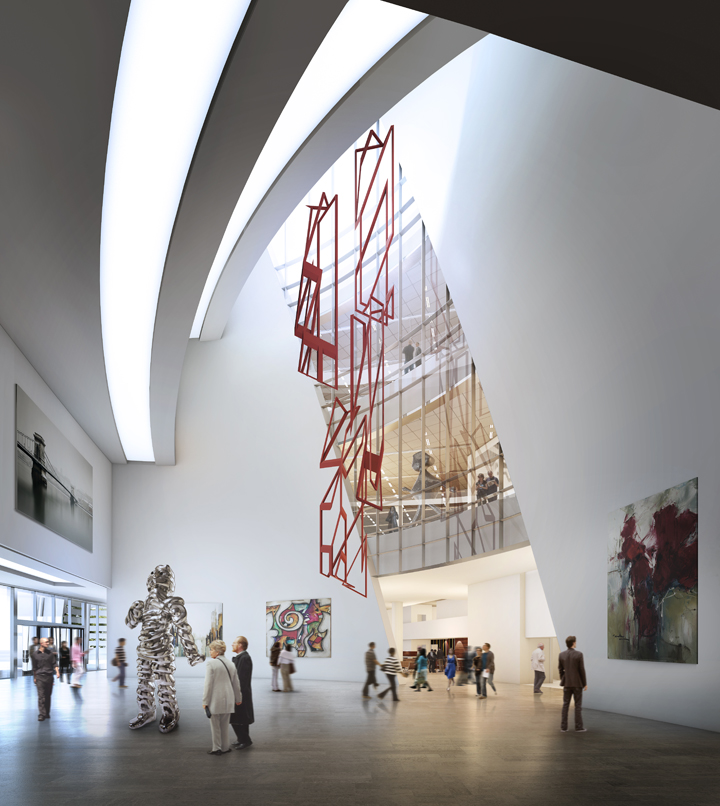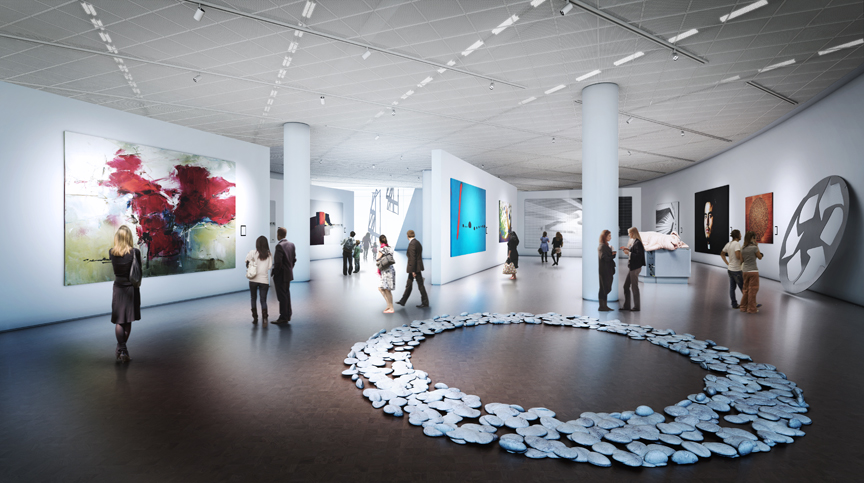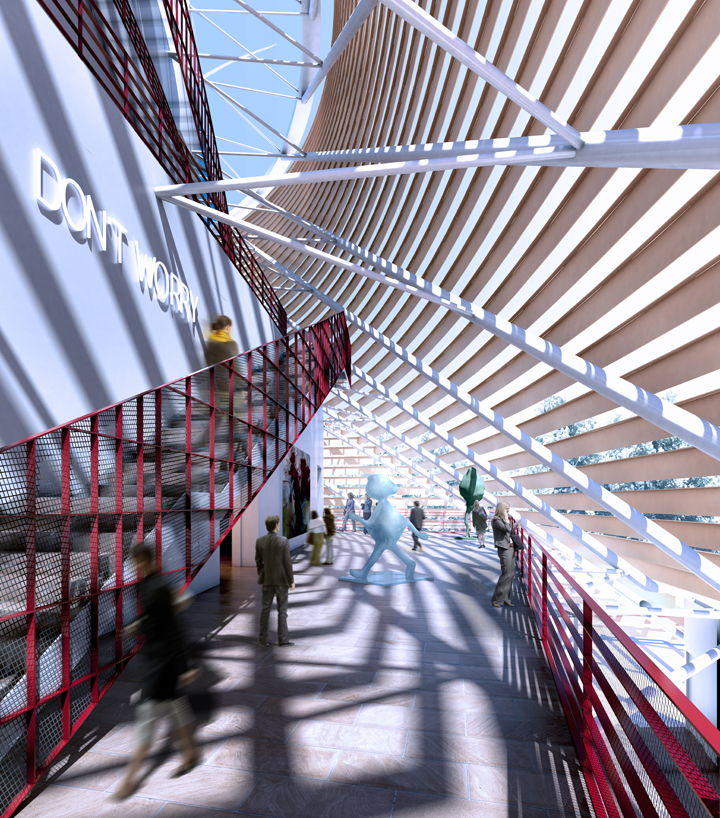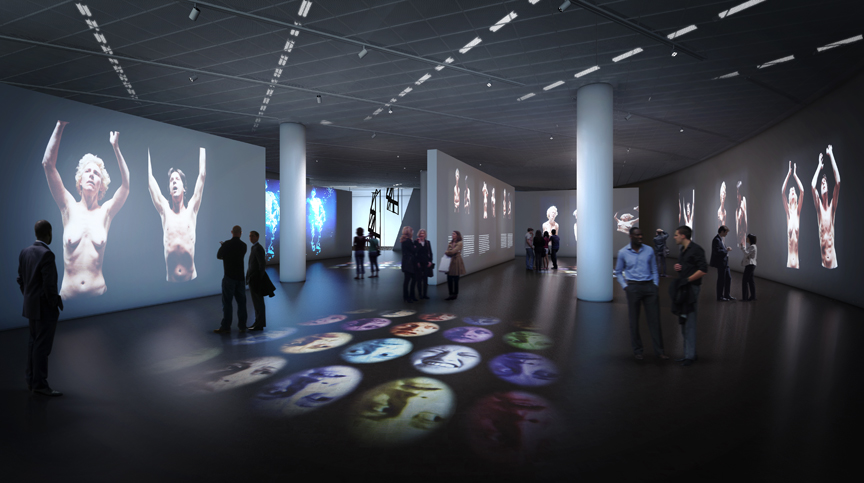The definitive project for Milan’s new Museum of Contemporary Art, to be built as part of CityLife, the redevelopment area of the former Milan Trade Fair site, was presented at the Urban Center, in the Galleria Vittorio Emanuele. The new space will further enhance the position of Milan and its surrounding area in the international modern and contemporary art world, following the opening of the Triennale Design Museum and the Museo del Novecento.
The project, designed by the American architect Daniel Libeskind in cooperation with his Italian partner CityEdge, features a vertical structure of five floors that, as it moves upwards, twists from its square base, and culminates in a circular terrace at the top. A highly suggestive geometrical evolution on a vertical axis that recalls not only Leonardo da Vinci’s golden section but also spherical astronomy and the process of evolution of art itself, which derives its beauty from the dynamics of transformation, the overlapping of images and the movement of different geometrical figures.
A covered exhibition area of five-thousand square metres, distributed on five floors, one of which below ground level: almost seven-thousand square metres of external exhibition space, spread across the garden, the terraces on each floor (1600 m2) and the big circular terrace on the roof (1400 m2); five exhibition galleries, a bar/bistrot on the ground floor, a restaurant on the mezzanine overlooking the park, with space for 80 diners and extensive kitchen facilities; as well as a artisan’s workshop for the staging of temporary exhibitions and a bookshop, and the administrative offices for the entire building. These are the main characteristics of a project that will give the city a great new museum, which already in its development stage was defined not merely as an exhibition space, but a work of art in its own right and an open laboratory and meeting place for people and culture.
The design excellence of the new museum is apparent not only from its aesthetic and functional appearance, but also from the technology it uses. In fact the architectural design was developed with the aim of achieving the highest possible level of environmental compatibility, using cutting-edge materials and building techniques, with the objective of becoming a zero impact building, in line with the rest of the CityLife.
The most important design objective sought by city authorities and the designers was the greatest possible flexibility in order to respond to all of the, nowadays often unpredictable, needs of a space dedicated to contemporary art.This is why the five galleries of the new building are presented as stand-alone units, with a minimum height of 5.5m and equipped with complex lighting and air conditioning systems that make it possible to stage any type of exhibition while at the same time keeping the dominant line of the structure visible to the visitor, the square that becomes a circle, as it moves from the ground to the sky.
A large atrium, beginning on the ground floor, connects the museum’s four levels, making physical and visible use of its 8-metre height to unite all of the building’s areas. On the one hand, this makes it possible to hang “outsized” works, providing the maximum flexibility for whatever artistic element is to be shown while, on the other, exploiting the height of the space to create natural ventilation throughout the galleries, and holding down the energy consumption of the entire building.
The outside of the building is characterised by a “screen” that is wrapped around the museum enabling a perception of the geometry out of which the architectural space is born. The “screen” is formed by a series of bronze-coloured varnished aluminium strips, that also provide a great sense of lightness and luminosity.On the south side, the space between the building and the external screen creates a series of external terraces of different sizes (a total of 1600 m2) that will be used as outdoor exhibition areas, mainly for sculpture.The building’s perfectly circular covering is conceived as a vast external exhibition area, like a “sculpture garden” of around 1400 m2, and only partially covered with a structure made up of steel and solar panels that increase the building’s energy efficiency, while also guaranteeing a certain level of protection against the elements.






















